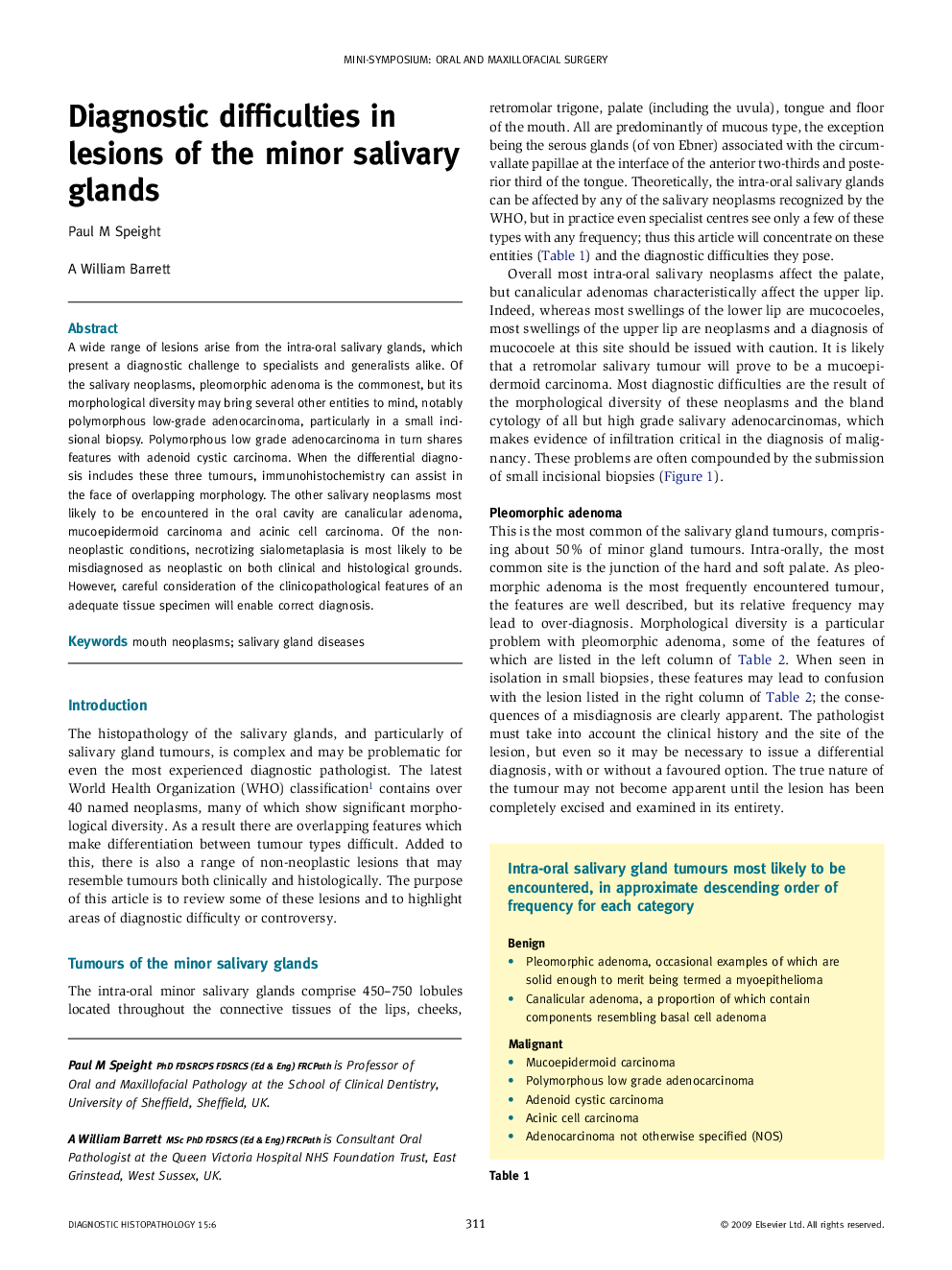| Article ID | Journal | Published Year | Pages | File Type |
|---|---|---|---|---|
| 4131704 | Diagnostic Histopathology | 2009 | 7 Pages |
A wide range of lesions arise from the intra-oral salivary glands, which present a diagnostic challenge to specialists and generalists alike. Of the salivary neoplasms, pleomorphic adenoma is the commonest, but its morphological diversity may bring several other entities to mind, notably polymorphous low-grade adenocarcinoma, particularly in a small incisional biopsy. Polymorphous low grade adenocarcinoma in turn shares features with adenoid cystic carcinoma. When the differential diagnosis includes these three tumours, immunohistochemistry can assist in the face of overlapping morphology. The other salivary neoplasms most likely to be encountered in the oral cavity are canalicular adenoma, mucoepidermoid carcinoma and acinic cell carcinoma. Of the non-neoplastic conditions, necrotizing sialometaplasia is most likely to be misdiagnosed as neoplastic on both clinical and histological grounds. However, careful consideration of the clinicopathological features of an adequate tissue specimen will enable correct diagnosis.
